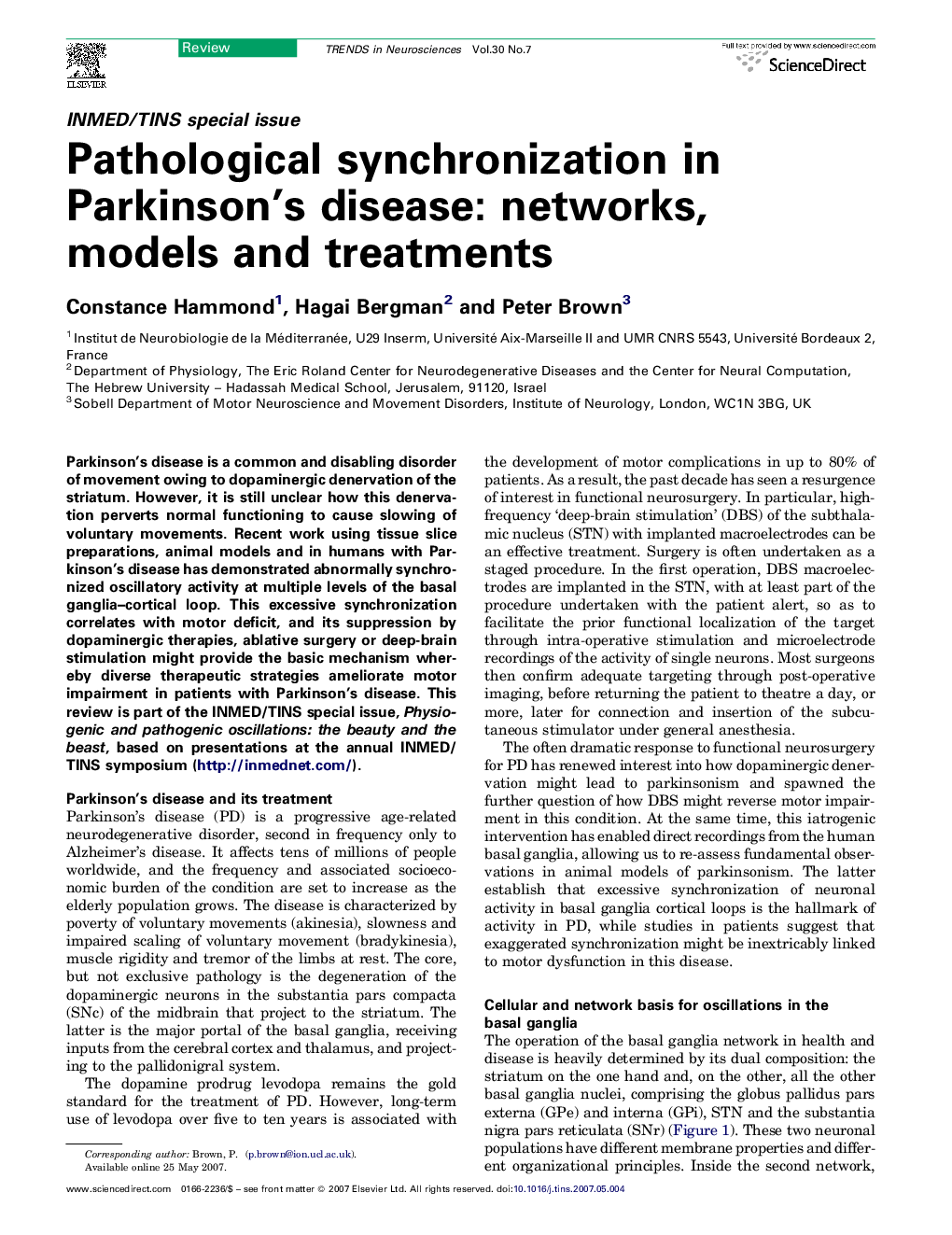| Article ID | Journal | Published Year | Pages | File Type |
|---|---|---|---|---|
| 4354814 | Trends in Neurosciences | 2007 | 8 Pages |
Parkinson's disease is a common and disabling disorder of movement owing to dopaminergic denervation of the striatum. However, it is still unclear how this denervation perverts normal functioning to cause slowing of voluntary movements. Recent work using tissue slice preparations, animal models and in humans with Parkinson's disease has demonstrated abnormally synchronized oscillatory activity at multiple levels of the basal ganglia–cortical loop. This excessive synchronization correlates with motor deficit, and its suppression by dopaminergic therapies, ablative surgery or deep-brain stimulation might provide the basic mechanism whereby diverse therapeutic strategies ameliorate motor impairment in patients with Parkinson's disease. This review is part of the INMED/TINS special issue, Physiogenic and pathogenic oscillations: the beauty and the beast, based on presentations at the annual INMED/TINS symposium (http://inmednet.com/).
